Back in March 2009 a trio of MySpace execs -COO Amit Kapur, SVP Steve Pearman and SVP Jim Benedetto – left to begin working on a new startup.
In May we learned that the company, then called Blue Rover Labs, had raised $10 million in funding. We also heard a few details about what the startup might be about: <em "The company is supposedly targeting the message board/Internet forum space with technology that aggregates content and serves advertising against it. Real time search (bingo! fundable!) may be part of the business plan as well."
Today the company, now called Gravity, is launching into private beta. At a high level Gravity is an evolution on forums (vBulletin, phpBB, etc.) and groups (Yahoo Groups, Google Groups, etc.) services, which haven’t evolved much over the last decade.
But that’s just the tip of the iceberg. Gravity is available both as a website service at Gravity.com as well as distributed via widgets and an API. They are also offering compelling analytics services for any service that hosts conversations (think broadly – Twitter, FriendFeed, Google Wave, etc.). That service, called Insights, is arguably a startup in itself.
And, finally, Gravity has created a new way of thinking about and exploiting conversational data. They call the way they track and predict the relationships between people and things the Interest Graph (a play on Social Graph, a popular way of describing online relationships between people).
I go into more detail on the products below. And here’s a video I took of the team in their Santa Monica offices yesterday:
Gravity: The Service
Gravity allows people to create conversations around topics. The service will be available on the Gravity website as well as via widgets and an API (we’re talking to them about adding a Gravity conversation to each record on CrunchBase, for example).
Gravity won’t be a mystery to anyone familiar with groups or forums. But their goal is to bring some more recent thinking on data architecture and user interface to the table. The team also makes it clear that they think of their domain as much wider than now-ancient forum software. A lot of what they’re talking about is comparable to features added to Twitter, FriendFeed and Google Wave. The goal is to help users discover topics that they’ll be interested in quickly, and then foster productive conversation.
Some of the features are simple and effective – like giving badges for participation. And others are just proven engagement tacticts, like adding a “like” link by comments to show support for what’s being said. This is nothing new to users of sites like Facebook and Twitter, but it’s compelling stuff when you look at aging forum services.
If anything, Gravity is a nice balance of fun, fluffy stuff and seriously thought through features. Here’s an internal Gravity chart, for example, showing how Gravity compares to Google Wave and Twitter. This isn’t to show one is better than the others. It’s a way of quickly visualizing exactly what Gravity is and isn’t:
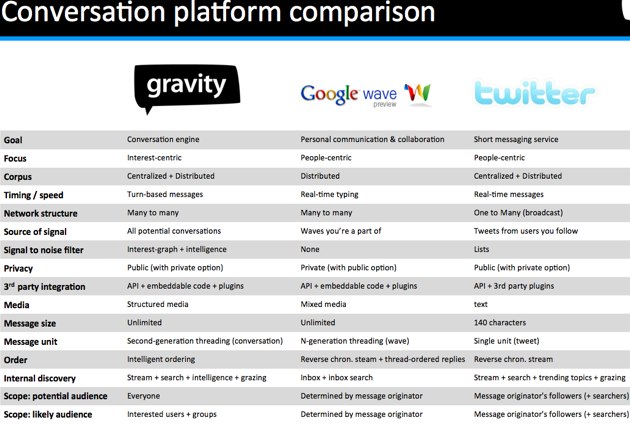
Insights Analytics
Think Google Analytics but for converstationally-focused services. In addition to tracking visitors, pageviews, signups, etc., Insights shows you how many threads and posts are being created over time. It also shows which threads are the most active, most viewed, etc. It works on Gravity’s service as well as other third party forum software and services. In fact, Gravity has been testing Insights with a bunch of third party forum sites for some time now.
They’ll provide the service to third parties for free. Their goal is to get access to the data to better build and understand the Interest Graph (more on that below).
Here are some screenshots of Insights. The first one, which shows a stream of pictures being added to a forum as well as a live stream thread, is actually a pretty compelling user-facing product, too.
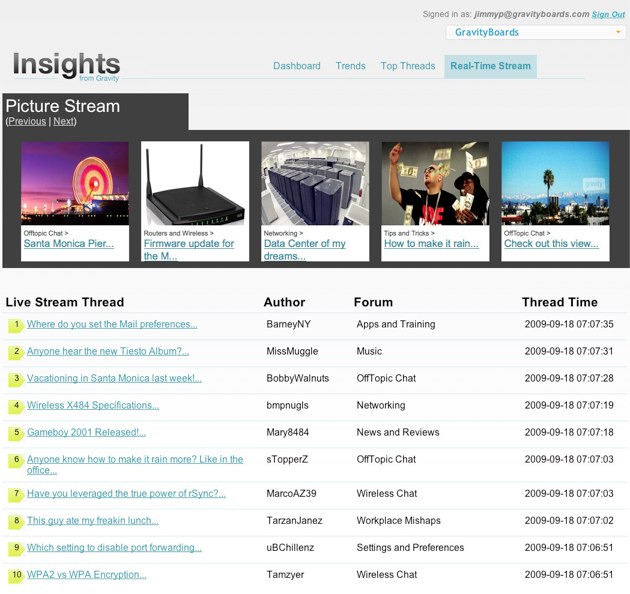
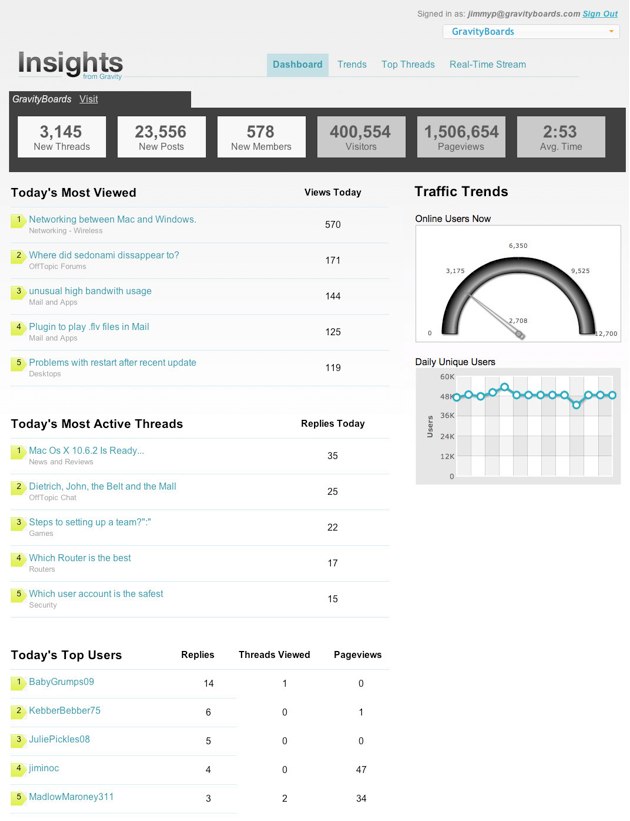
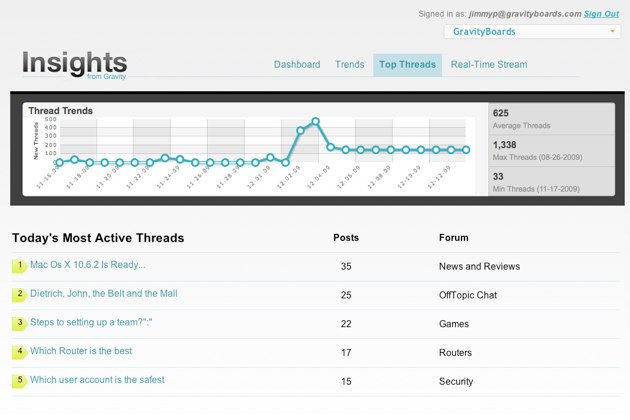
The Interest Graph
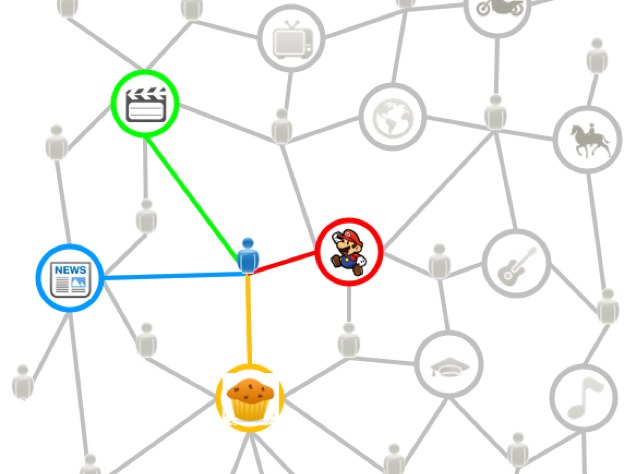
This isn’t a product or feature, it’s the religion of the Gravity service. The company isn’t giving a lot of detail on the software behind the Interest Graph, but they are willing to take time to describe the philosophy. The idea is that knowing which people are connected to which people is great for social networks, and Facebook and others have done a good job at that.
Gravity is building an Interest Graph, which shows the relationships between people and topics that they are passionate about. Person A may love baseball and the NYTimes. Person B may love action movies and squirrels. Given enough data the service can start to predict exactly what you’re interested in over time.
And they’re going to great lengths to gather that data. It isn’t simply based on what topics you start and add to. Gravity is also analyzing the language you use to gather further information about your interests.
And they’re thinking about the decay rate of interests, too. You may be very interested in cars right now, but next month after you buy the new Honda you may not have the same level of interest. They’re able to see how engaged you are on certain topics, and how that maps statistically to what others are doing. That helps them build out a very interesting profile of who you are, and who you may be in the future.
Not only can they use that data to push you to new content you may be interested in, it gives them an amazing dataset to advertise against. And that’s the real value of Gravity. The more time I spent with the team the more clear it was that the conversation engine that people will use is merely the very tip of what this company is doing. There’s an ambitious project below the water line that has to do with gathering, analyzing and leveraging data to give people exactly what they want, when they want it. Even, eventually, advertising. Fascinating stuff.
Trying Out Gravity
You can sign up for the Gravity private beta on their home page. Make sure to properly fill out the form, they want to first add people who they think will really like using the service. And if you add TechCrunch in the appropriate field it will get you in quicker. Look for first invites to go out in a couple of weeks.